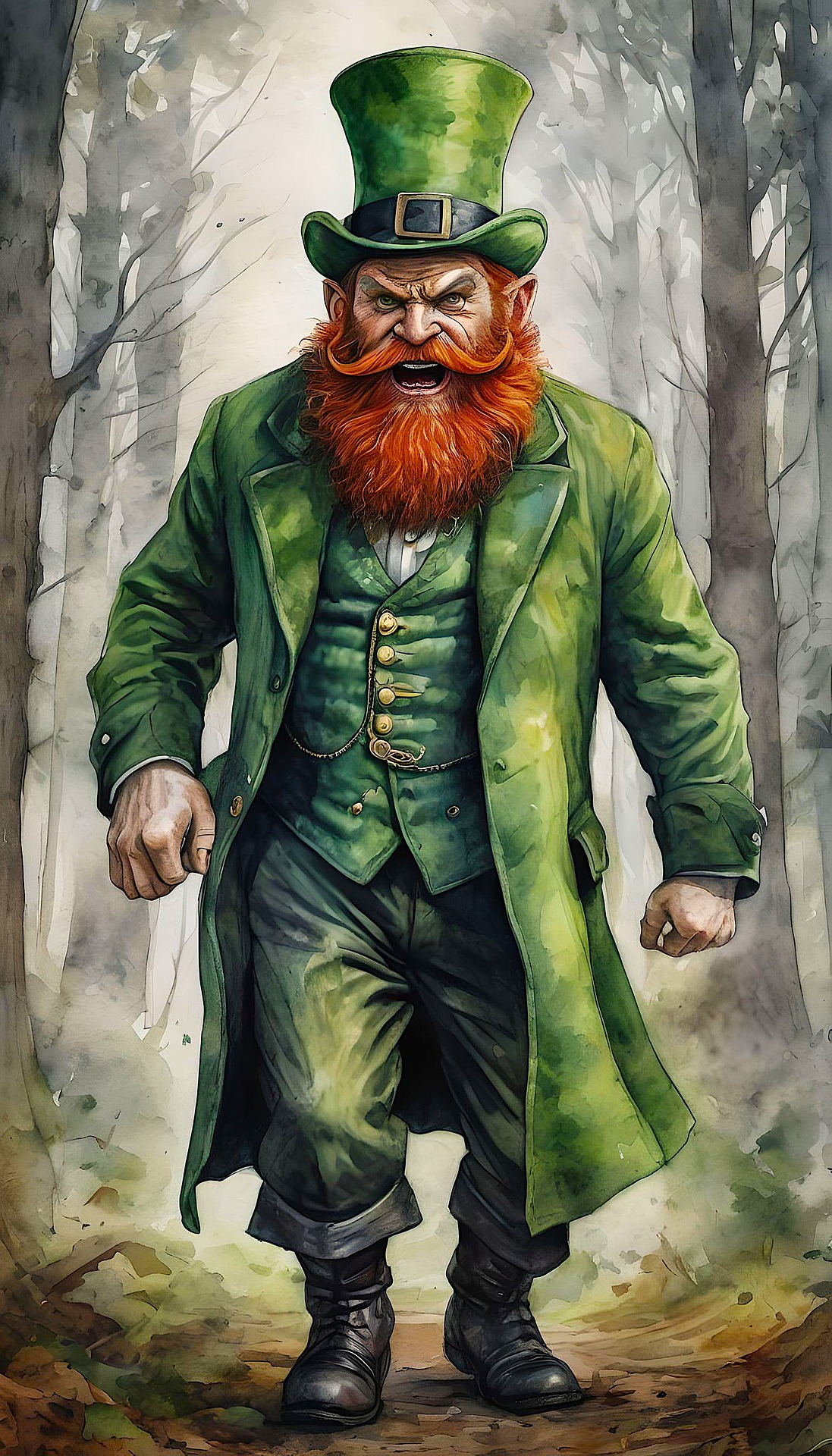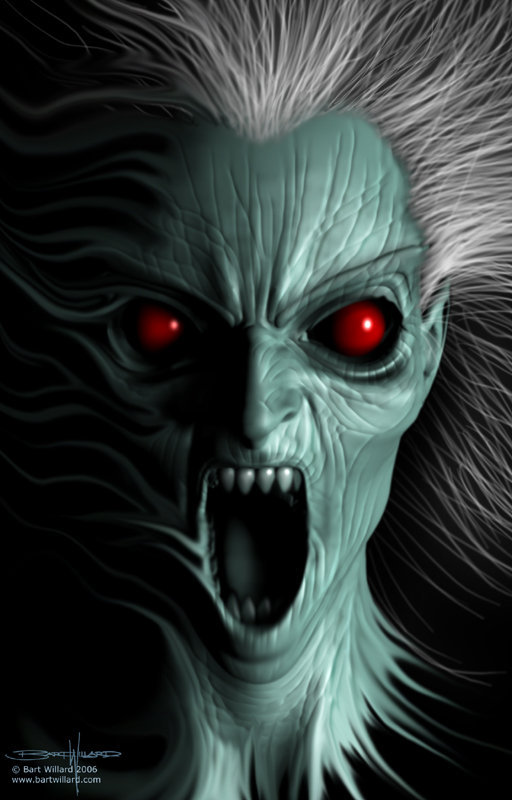 Submitted by Holbrook PSI on
Submitted by Holbrook PSI on

Image by Jim Cramer from Pixabay
I hope you have your green on for this article. “Why,” you may ask, “should we have our green on?” Well, with another St. Patrick’s Day still strong in our memories, a little luck of the Irish couldn’t hurt. I don’t know about you but I sure could use a pot of gold or a lucky four leaf clover in my life. Ireland is the home of many legends and folklore that have with her people migrated to the United States. I don’t think we here in the States would have a St Patrick’s Day if it was not for our Irish immigrants. So get your shamrock and shillelagh and let’s look at one of the best known legendary inhabitants of Ireland, the Leprechaun.
Part 1 - The Leprechaun
The Oxford University press dictionary states, “Leprechaun >noun (in Irish folklore) a small, mischievous sprite. -ORIGIN Old Irish luchorpán, from lu 'small' + corp 'body’.” The name Leprechaun may actually have been derived from the Irish leath brogan (shoemaker) or the Gaelic word luacharma’n (pigmy), or any of the other Gaelic words that may or may not fit the description of a Leprechaun. The Leprechaun is a fairly ancient belief of Irish folklore, but it started out quite different than we know it today. According to many texts the ancient origins of what we know today as a Leprechaun was a Euro-Celt God named Lugh (pronounced “Luck”). Lugh was an important God to the Euro-Celtic religion, he was the great Sun God, patron of arts and crafts and the leader of the Tuath de’ Danaan, these myths eventually became simplified and popularized into the Leprechaun. They have also become the self-appointed guardians of ancient treasure (possibly left by the Danes) by burying it in crocks or pots.
In the early years of the legend it was believed that they would help humans and perform small favors for them, but they were eventually driven out by the Gaels (possibly derived from Gwyddel meaning raiders) who the Leprechaun’s would regard as foolish, flighty and greedy. This would be when the Leprechaun family spilt in two distinct groups the shoemaker pot of gold Leprechaun’s and the Culricauns. The Culricauns are described the same as Leprechauns except for the fact that they may steal or borrow almost anything while creating mayhem in the houses during the hours of darkness, turning milk sour, raiding wine cellars and cupboards. They will also harness sheep, goats, dogs and even domestic fowl and ride them throughout the country at night.
If you’re looking for a leprechaun, they are described as being two feet tall, unfriendly and gruff dressed in old fashioned green coats with a shoemaker’s apron and a green hat. It is believed that they speak in poetry or rhymes and are often found in an intoxicated state caused by home brew poteen. They are never so intoxicated that they would have an unsteady hand with their shoe making hammer. They are said to be shoemakers for elves but only for one shoe and never a pair. Some have described them as fairy shoemakers but they are elf in nature not fairy.
In all my readings, I have never found mention of a female leprechaun; this may explain the fact why they are gruff and unfriendly. One of the most popular beliefs regarding the Leprechauns is that they possess a treasure (the pot of gold) which you could take if you could only catch one. If caught by a mortal, a leprechaun will promise great wealth if allowed to go free. He carries two leather pouches. In one he has a silver shilling and in the other a gold coin. The silver shilling is said to be a magical coin that returns to the pouch each time it is paid out. The gold coin is used to try to bribe his way out of difficult situations. This coin is also magical and usually turns to leaves or ash once the leprechaun has parted from being captured. It is said that you must never take your eyes off a leprechaun or he will vanish in an instant. So, in your search for the solitary leprechaun you may want to follow any rainbows you come across to the end - for that is where his pot of gold is said to be. At the end of the rainbow listen for the sound of a small hammer and keep a keen eye out for the little fellow making one shoe. If you’re lucky enough to snag him up only take a small part of his treasure lest he may call out one of his kin folks the Culricauns to torture you until he gets his treasure back. Happy hunting.
Part 2 - The Banshee

Now, a legendary inhabitant of Ireland that is not so well known but is still talked about in whispers in the protective light of a candle on the darkest of nights is the banshee. The Oxford University Press Dictionary states, “banshee >noun (in Irish legend) a female spirit whose wailing warns of a death in a house. ORIGIN from Old Irish ben síde 'woman of the fairies'.”
According to some legends, the banshee may be an ancestral spirit appointed to forewarn members of certain ancient Irish families of their time of death. In this legend the banshee can only cry for the five major Irish families: the O’ Neills, the O’ Briens, the O’ Connors, the O’ Gradys and the Kavanaghs. Although most of the legendary cases of encounters with a Banshee are rooted in the five major families, due to passing of time and new blood being infused with the old, the Banshee may cry for any one of Irish descent now. She will appear if seen in one of three guises: a young woman, a stately matron or an old crone. The young woman is said to be of such beauty that all that see her will be in awe of her countenance and if you happen to be male she will bewitch you. If she appears as the matron she has an air of dignity and authority that compels you to bow to her presence. In the last guise (the old crone) she will have the on-looker thinking that he has happened upon a witch right out of a fairy tale of old.
These guises possibly represent the triple aspects of the Celtic Goddess Morrigan (Great Queen) with her three aspects being Macha the Badb and either Anann or Nemain. She usually wears a grey hooded cloak, a winding sheet, or a grave robe of the un-shrived dead. She may also appear as a washer woman who is seen washing the blood stained clothes of those who are about to die. In this guise she is known as a Bean-Nighe (washing woman). Although not always seen, her mourning calls or screams are heard usually at night when someone is about to die. In different parts of Ireland she may go by different names and the sound she produces varies from region to region. Some say that the sound she makes can be so piercing that it can shatter glass. This can be a low pleasant singing, the sound of two boards being struck together or a thin screeching sound somewhere between the wail of a woman and the call of an owl.
The legend of the Banshee may be tied to a practice that some still practice today when a member of the community would die and a woman would sing a traditional lament or caoineadh at the funeral. These women singers are sometimes referred to in English as a kenner. The legend stated that the five major families of Ireland had a fairy kenner that would appear and sing at their funerals or if the member of the family was far away from their home, it would appear as the first sigh of a death in the family. The banshee may also be tied to the “woman in white” ghost stories I have heard from Ireland. It was told to me that a man of means was unfaithful to his new bride with her sister. When his new bride found out she walked off a cliff and plunged to her death in the waters below. A week after her death the wails of a Banshee started until they drove the unfaithful man mad and he followed his bride off the cliff to his own death. In this story it may have been the spirit of the bride and not a Banshee but who is to say for sure.
Within all the literature I have read and in all the stories I have heard the Banshee is all ways an omen of a death and never the cause. Who can say for sure that she is not what attracts death to do her bidding with her song for the dead and soon to die. I think I will keep an ear open for her song and hope that I don’t hear it till I am ready to make the last trip in to the unknown.
- 1390 reads